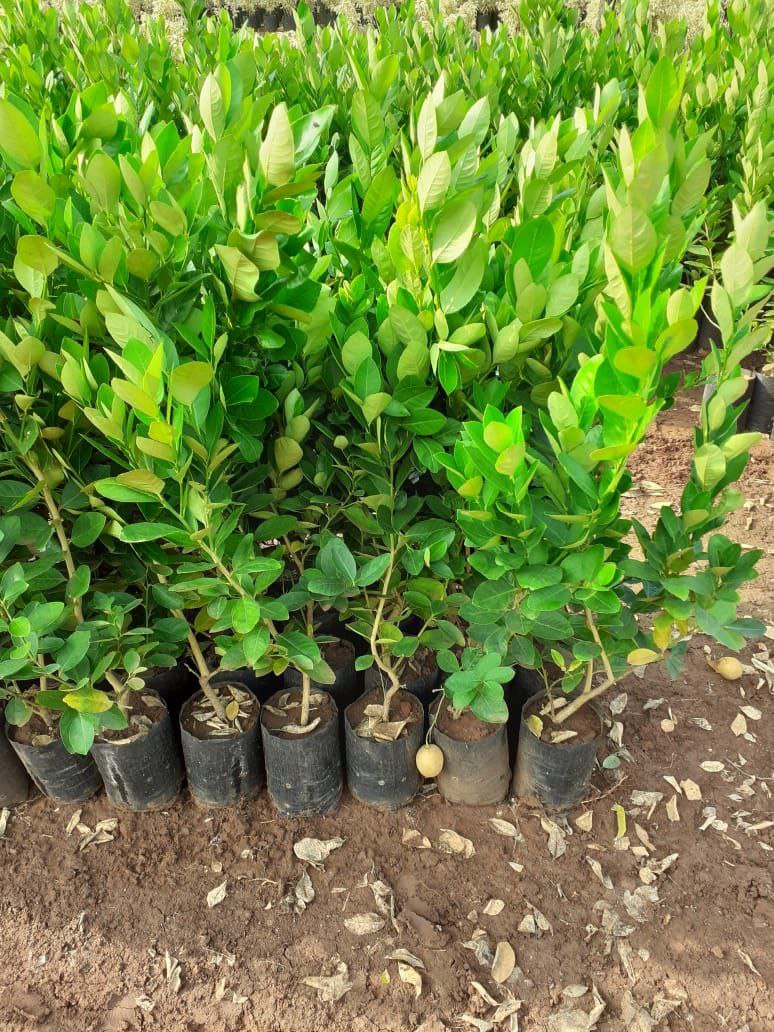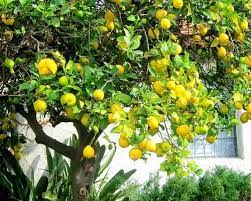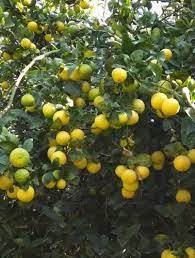Kagdi Lemon Plants
Kagdi lemon, also known as Kagzi or Kagzi Lime, is a popular variety of lemon known for its distinct flavor and high juice content. Here’s a detailed overview of Kagdi lemon plants:
1. Origin and Characteristics:
- Origin: Kagdi lemon is widely grown in India, particularly in Maharashtra and Karnataka. It’s a common variety in Indian cuisine due to its unique characteristics.
- Fruit Characteristics: Kagdi lemons are typically smaller than other lemon varieties. They have a thin, greenish-yellow skin when ripe and are known for their high juice content and tangy flavor. The fruit is usually seedless or has very few seeds.
2. Growing Conditions:
- Climate: Kagdi lemon plants thrive in tropical and subtropical climates. They require warm temperatures and are sensitive to frost. They prefer a climate with a distinct dry and wet season.
- Soil: These plants grow best in well-drained soil rich in organic matter. Sandy loam or loamy soil with a slightly acidic to neutral pH (6.0 to 7.0) is ideal.
- Watering: Regular watering is crucial, especially during dry periods and the fruiting season. Kagdi lemon trees need consistent moisture but should not be waterlogged. Allow the top 1-2 inches of soil to dry out between waterings.
- Sunlight: Full sunlight is essential for optimal growth and fruit production. Kagdi lemon plants need at least 6-8 hours of direct sunlight daily.
3. Planting and Care:
- Planting: The best time to plant Kagdi lemon trees is during the monsoon season or just before the rainy season. Prepare the planting hole to be twice as wide and deep as the root ball. Enrich the soil with compost or well-rotted manure.
- Spacing: Space the trees about 10 to 15 feet apart to allow for proper growth and reduce competition for resources.
- Fertilization: Apply a balanced, slow-release fertilizer formulated for citrus trees regularly during the growing season. Organic options like compost or fish emulsion can also be beneficial.
- Pruning: Prune the trees to shape them, remove dead or diseased branches, and improve air circulation. Proper pruning helps in enhancing fruit quality and reducing the risk of diseases.
4. Pests and Diseases:
- Pests: Common pests include aphids, spider mites, scale insects, and whiteflies. Regular monitoring and appropriate pest control measures, such as insecticidal soap or neem oil, can help manage these pests.
- Diseases: Kagdi lemon plants can be affected by diseases such as citrus greening, root rot, and powdery mildew. Implement good cultural practices, avoid overhead watering, and use fungicides or bactericides as needed to prevent and control these diseases.
5. Harvesting:
- Timing: Kagdi lemons are typically harvested when they are fully yellow and slightly soft to the touch. The specific harvest time can vary based on local climate and growing conditions.
- Method: Harvest the lemons carefully to avoid damaging the tree. Use pruners or scissors to cut the fruit from the tree, leaving a small portion of the stem attached.
6. Uses:
- Consumption: Kagdi lemons are used in a wide variety of culinary applications due to their high juice content and tangy flavor. They are often used in Indian cuisine for making chutneys, marinades, and drinks.
- Culinary Uses: They can be used to make lemon juice, lemonade, dressings, marinades, and desserts. Their tangy flavor makes them ideal for both sweet and savory dishes.
7. Indoor and Container Growing:
- Indoor Care: If growing indoors, place the Kagdi lemon plant in a sunny location and use grow lights if necessary. Ensure proper humidity levels and regular watering.
- Container Growing: Choose a large container with good drainage and use a high-quality potting mix. Container-grown Kagdi lemon trees may need more frequent watering and fertilization.
Kagdi lemon plants, with their distinctive flavor and high juice content, are a valuable addition to any garden or home. With proper care, these plants can produce abundant, flavorful lemons that enhance various culinary creations




.jpg)
.png)
